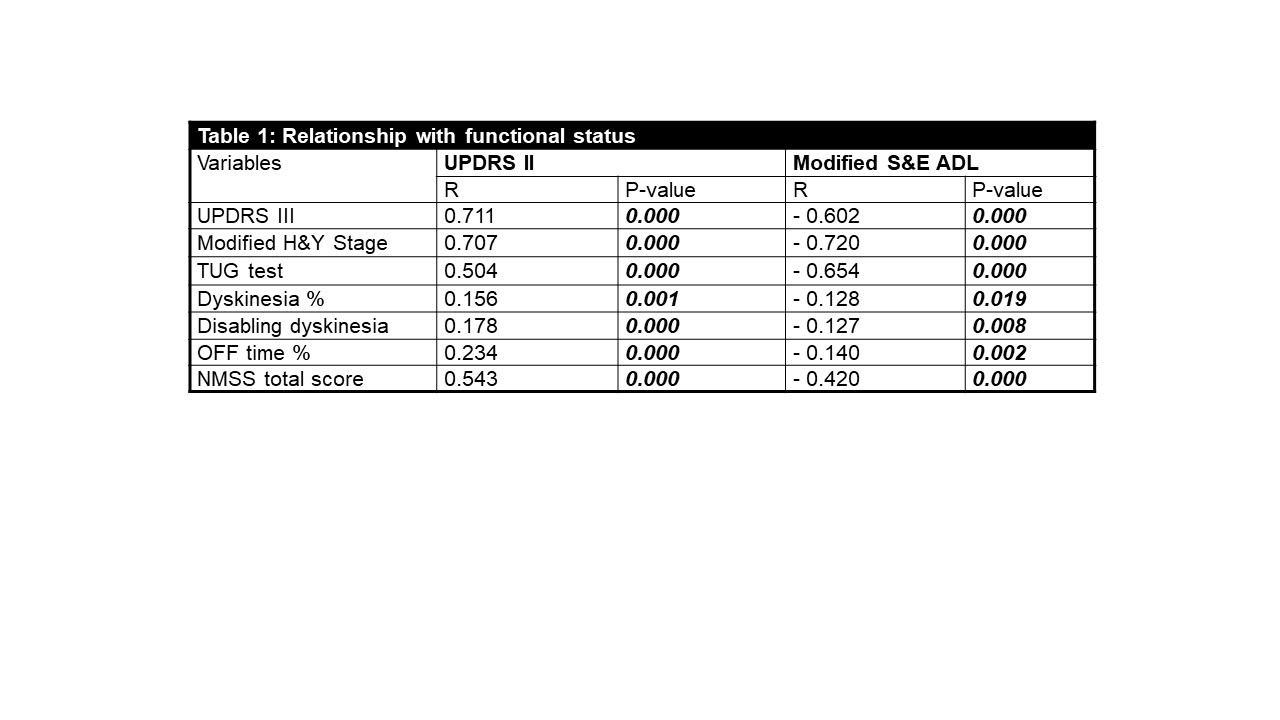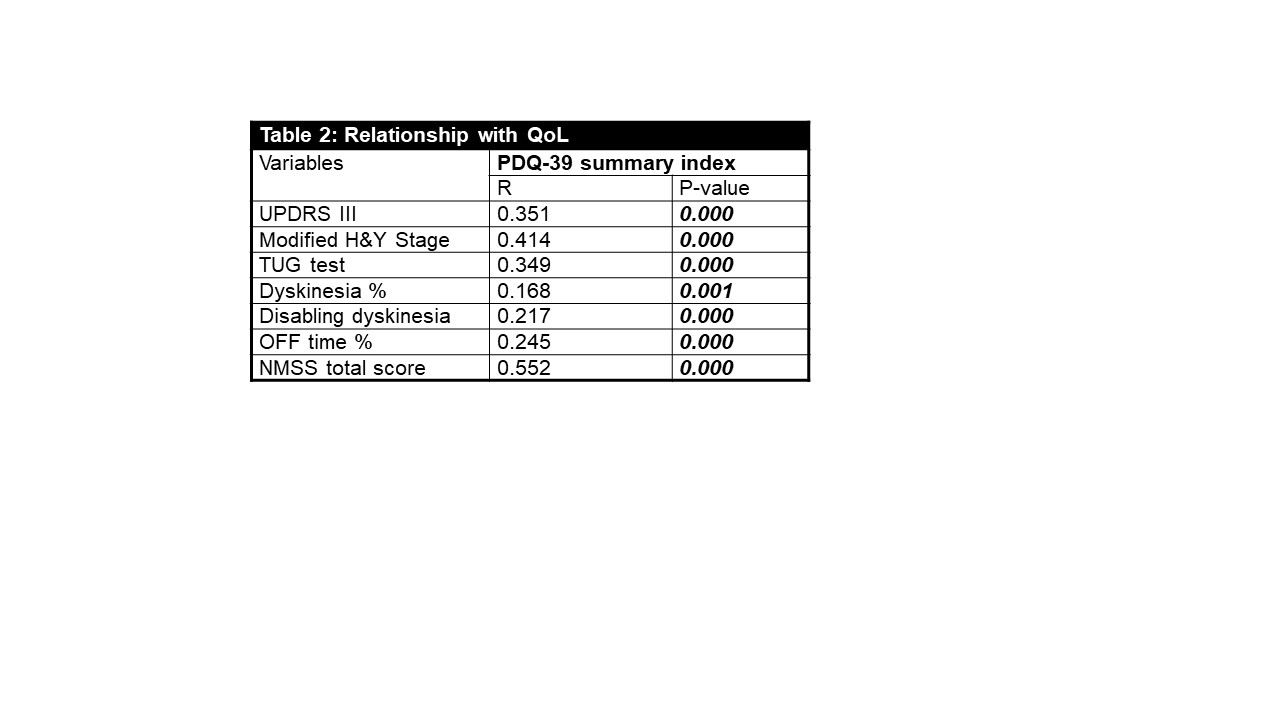Session Information
Date: Sunday, October 7, 2018
Session Title: Phenomenology and Clinical Assessment Of Movement Disorders
Session Time: 1:45pm-3:15pm
Location: Hall 3FG
Objective: To evaluate if motor or non-motor symptoms affect PD patients’ functioning and well-being more.
Background: The cardinal features of PD are motor symptoms, which include resting tremor, rigidity, bradykinesia and postural instability. They determine patients’ functional independence. On the contrary, non-motor symptoms in PD has received increasing attention recently. It has been suggested that as compared with motor symptoms, non-motor symptoms are even more disabling and can predict nursing home placement. Unfortunately, it is not certain if motor or non-motor symptoms are more incapacitating in PD.
Methods: Study design: Retrospective study by reviewing the medical records of the multidisciplinary PD clinic of Queen Elizabeth Hospital of Hong Kong between October 2014 and January 2018. Inclusion criteria of the participants of the multidisciplinary PD clinic: 1. A clinical diagnosis of PD based on the UK Brain Bank criteria. 2. Ability to complete the study questionnaires. 3. Written informed consent signed. Method: 1. Functional status was evaluated by Unified Parkinson’s disease rating scale (UPDRS) part II (Activities of Daily Life) and Schwab and England Activities of Daily Living Scale (S&E ADL scale). 2. Quality of life (QoL) was assessed by the 39-Item Parkinson’s Disease Questionnaire (PDQ-39). 3. Motor symptoms were assessed by modified Hoehn and Yahr (H&Y) stage, UPDRS part III (motor), Time Up and Go (TUG) test and the presence of motor complications such as motor fluctuation and dyskinesia. 4. Non-motor symptoms were assessed by Non-Motor Symptoms Scale (NMSS). 5. SPSS version 20 was used for statistical analysis.
Results: 1. Both motor and non-motor symptoms were associated with PD patients’ functional status and QoL. 2. Motor symptoms were found to have a stronger correlation with patients’ functional status whereas non-motor symptoms had a stronger relationship with QoL in PD. (Table 1 and 2).
Conclusions: This study reported that both motor and non-motor symptoms affected PD patient’s functioning and well-being. While motor function was the strongest predictive factor of functional status, non-motor function had a greater impact on QoL.
To cite this abstract in AMA style:
G. Chan, N. Cheung, A. Leung, D. Chau, C.W. Woo, B. Chee, W.C. Fong. Motor and Non-motor symptoms in Parkinson’s disease (PD): Which are more important? [abstract]. Mov Disord. 2018; 33 (suppl 2). https://www.mdsabstracts.org/abstract/motor-and-non-motor-symptoms-in-parkinsons-disease-pd-which-are-more-important/. Accessed December 18, 2025.« Back to 2018 International Congress
MDS Abstracts - https://www.mdsabstracts.org/abstract/motor-and-non-motor-symptoms-in-parkinsons-disease-pd-which-are-more-important/


